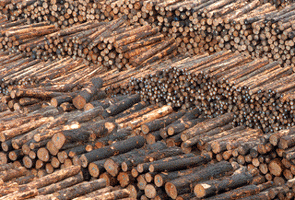
By David Chaston
The market for timber and logs is facing record demand as prices push higher to well above previous record levels.
In 2010, New Zealand 'roundwood removals' - the industry term for log harvesting - were up almost 20% to 24.8 million cubic metres, due to record volumes of log exports which were up 23.5% to 10.9 million cubic metres.
This high level of export demand has only gotten stronger in 2011. The ANZ Commodity Index in March revealed price rises of 4.7% for the month, the seventh month in a row export log prices have increased.
Prices and returns to local log suppliers are rising in spite of the high exchange rate.
The main reason is demand from China, according to a detailed market analysis by PF Olsen. At the same time, new and rising demand from India is also significant, as well as continuing "robust" demand from Korea.
And now, Asia-Pacific wood processors are starting to buy in anticipation of reconstruction demand for earthquake/tsunami-hit areas of Japan.
However, there are new and unusual factors is in this market, according to the PF Olsen report. Normally at this time of year, log markets soften as seasonal Russian supply becomes available. But there is no moderating effect this year, as Russian supply is significantly lower after Russia introduced a tax on log exports to encourage more domestic processing.
But a bigger and maybe more important reason is that China is locking up more of its own forests to logging, to build their own timber stocks, to start protecting their environment, and as part of their efforts to reduce carbon emissions.
"It was recently reported that [the] northeast province of Heilongjiang has banned logging for ten years in the country's largest forest, covering some 430,000 square kilometres, effective immediately," said the PF Olsen report. To put that in perspective, the total land area of New Zealand is 268,012 square kilometres.
The other big export market for NZ logs is North America, and while demand there has been soft while new homebuilding in that market has been low, any lift will add to overall demand. North American demand will affect prices because it is such a large market.
Sawn timber exports are much smaller than log exports, but these are also rising fast. In the December 2010 quarter, they were up 15.3% to almost 600,000 m3, with the export of sawn timber to China up 81%.
Locally, Christchurch earthquake reconstruction will add to demand for logs and timber. But high export prices will make that reconstruction significantly more expensive. It is also expected to "be a catalyst for continued rationalisation in the domestic wood processing sector" which probably means that smaller, locally-owned processors are expected to get swallowed up by their bigger, foreign-owned competitors.
We track export log prices here >>
ANZ commodity price index
Select chart tabs
1 Comments
As I said, expect every sodding building material price to be pushed higher...regardless of whether it's Bernanke's silly games or a lift in real demand or just BS from the suppliers, you can expect this to have a not so nice impact on the building sector across all regions bar Chch and maybe Auckland. And don't forget...the govt steals 15% on top...aint this just great news.

We welcome your comments below. If you are not already registered, please register to comment.
Remember we welcome robust, respectful and insightful debate. We don't welcome abusive or defamatory comments and will de-register those repeatedly making such comments. Our current comment policy is here.